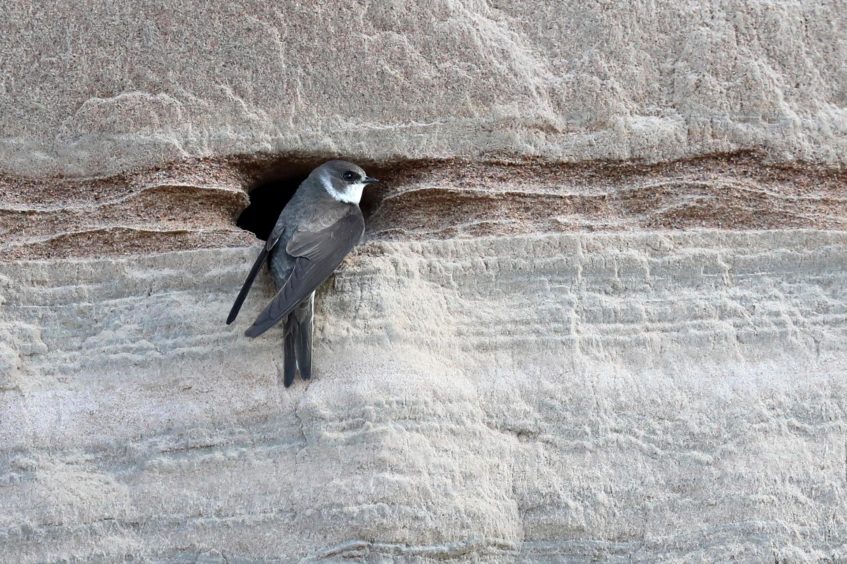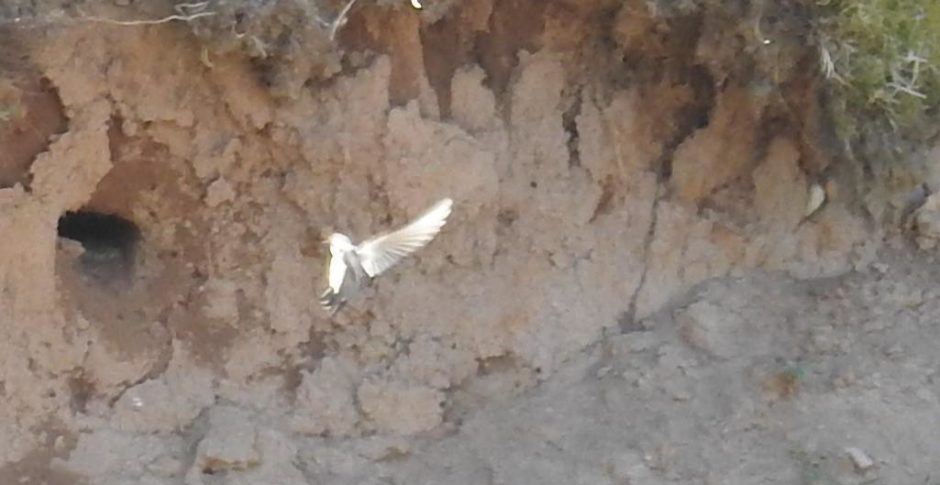I know a guidebook that describes the standard issue uniform of a sand martin as “upperparts uniform brown and underparts white with distinct brown band across breast”.
It doesn’t actually use the word “dull”, but I sense an unwritten subtext at work.
I carry a torch for sand martins. They have a particularly treasured place in my idea of spring.
In the landscapes I inhabit regularly, they are among the first migrants to take a bow.
The commitment they make to fly from beyond the Sahara Desert to the River Balvaig, say, or the Allan Water or Sheriffmuir convinces me of the certainty of one more spring determined to defy the odds of climate change and take its place in the pageant of seasons.
Sheriffmuir is a shelf of high, sloping moorland on the western edge of the Ochil Hills. The last of the hills tilt steeply to the moor and with a captivating hill burn.
Where it levels out briefly, it curves sharply beneath a high bank, overhung with thick moor grasses at the top.
Some years, drought on the far edge of the Sahara wipes out insect populations and the martin populations crash. But they never forget where the bank is, and sooner or later, they turn up
Every year or two, a spate realigns the bank, rips away a little more of its bare earth face, tumbles a few more rocks into the water.
For as long as I have known it, that bank has harboured a colony of sand martins and every spring I check in on them to see if they have made it back from the far side of the Sahara.
They don’t always. In 2018, the year of the beast from the east, they simply didn’t show.
Some years, drought on the far edge of the Sahara wipes out insect populations and the martin populations crash. But they never forget where the bank is, and sooner or later, they turn up.
Four minutes of fame
This is a relatively good year for them, which apart from anything else, has proved particularly useful for me.
I was asked to take part in an upcoming Landward TV programme about spring, and the arrival of the martins seemed like a good subject for my four minutes of fame.
It made sense to make sure there were martins to film so I paid a couple of visits in the week before the due date.
Trial and error followed but a nature writer who baulks at a wet foot is in the wrong job
The second one was particularly good. There were around 15 newly excavated nest burrows. The winter had been tough on the bank and little remained of the old nests. The new arrivals, between 30 and 40 of them, had to start again.
I had to start again too, for the burn lay between me and the best place to watch the nest bank, and last year’s reasonably reliable stepping stones have been seriously compromised by the winter’s spates.
Trial and error followed, the errors extracting the price of a wet foot or feet, but a nature writer who baulks at a wet foot is in the wrong job.
The drystone dyke was comfortable at my back, the stones familiar. Settle and still.
A flash of light
For a while, the martins were elsewhere. But I know the pattern. When one comes in, they all come in, or almost all, and they cluster around the best of the nest holes and try and insinuate themselves inside.
Twenty or more birds in the standard issue uniform crossed and re-crossed the airspace before they bombarded the burrows, four or five to a hole, then something was resolved, they scattered again in search of more insects, more nest materials.
A handful lingered a little longer, all regulation brown with white bits beneath, except that the last one to leave was bright white all over.
Why had I not spotted that before? The thing is, with sand martins it’s the flock that thrills, not the individuals, and when the flock was in and out of the burrows and all across the bank, the flashes of white underparts hid the one that was all white.
Even when I looked at the handful of photographs I had taken, it took a while to realise what was there, and I enlarged the photograph for a good look at a rare bird.
This, I thought, will be something else for me to talk about when the TV people are here, except that by the time the TV people came, the white bird was posted missing.
Why so? One possible explanation is much more likely than all the others.
Risks of standing out
When a flock of largely dark-coloured birds materialises where none had been over the winter, it attracts the attention of the predator tribes, in this case the neighbourhood sparrowhawks, peregrine falcons, red kites, the occasional hen harrier.
Of all these, the likeliest to make a kill among such high-performance fliers as sand martins is the highest-performance of them all in this neck of woods, the peregrine.
And studies of peregrines among flocks of pigeons have shown that if there is a white bird among all that mottled grey, then the white one is the first they target.
All I know is that I saw it once, took its picture, it was gone by the time the TV people came, and I haven’t seen it since.
The moral of the story is, don’t believe everything you read in the guide books.












